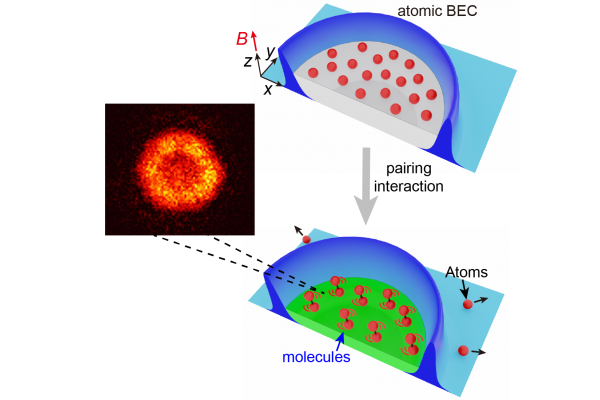
Our paper, "Transition from an atomic to a molecular Bose–Einstein condensate" is published in Nature.
We create Bose-Einstein condensates (BECs) of spinning short-range molecules in a flat-bottomed two-dimensional trap by pairing atoms in an atomic BEC through a g-wave Feshbach resonance. The trap geometry and the low temperature of the molecules help to reduce inelastic loss, ensuring thermal equilibrium. From the equation-of-state measurement, we determine the molecular scattering length to be +220(± 30) Bohr radii (95% confidence interval). We also investigate the unpairing dynamics in the strong coupling regime and find that near the Feshbach resonance the dynamical timescale is consistent with the unitary limit. Our work demonstrates the long-sought transition between atomic and molecular condensates, the bosonic analogue of the crossover from a BEC to a Bardeen-Cooper-Schrieffer (BCS) superfluid in a Fermi gas.
This work is featured on UChicago News .
- Log in to post comments